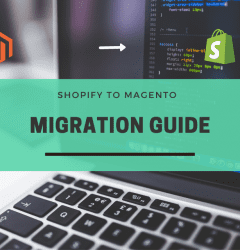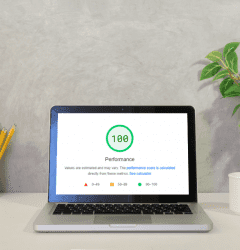This website uses cookies so that we can provide you with the best user experience possible. Cookie information is stored in your browser and performs functions such as recognising you when you return to our website and helping our team to understand which sections of the website you find most interesting and useful.
09 Sep

Why and When Should a Brand Move to Headless Commerce?
With more and more customers accessing eCommerce sites through a variety of devices, this makes it necessary for eCommerce businesses to ensure that their customers are provided with a seamless experience. For this purpose, many brands are going headless these days; including major players in the industry such as Nike, Target, Reebok, etc. Even top e-commerce platform providers such as Shopify, Adobe, Commerce Tools, and others are switching to headless architecture.
Now the question arises – Whether or not you should switch to headless solutions, and when is the ideal stage to move to the same?
In this blog, we will review the benefits and challenges of headless commerce and key indicators of whether your business is ready to move away from a traditional monolithic site:
1. Offers Faster Speed and Performance: In traditional e-commerce, the front-end and back-end are coupled together, which can ultimately hurt site speed and performance.
Headless commerce detaches the presentation layer (front-end), from the commerce functionality and background process layer (back-end). Due to this the frontend can be served faster, which enhances the website’s performance significantly and thus improves your page speed score. It also makes the platform scalable as the traffic increases, we can scale the front-end to handle the traffic without much increasing the backend.
If you want a solution that helps you make your website faster and provide a more seamless experience to your customers, then headless commerce is the right choice for you.
For one of our clients, who is a leading manufacturer of safety signs and labels in the US, we developed a decoupled system with Magento backend & ReactJS frontend. Using the customized headless system, we were able to achieve a 100/100 Google Page Speed score for product details page.
2. Smooth Omnichannel Buying Experience: With the increase in competition and ever-changing customer needs, if you are looking to provide your customers with a personalized experience across all platforms, then headless commerce is the way to go. Headless commerce makes it easier for brands to offer customers a personalized experience. With headless commerce, you can create similar interactions at different touchpoints with the same backend and give customers the same seamless experience, whether it is Website, Mobile Web, Mobile App, POS, Kiosk, etc. If customers navigate from one channel to another, they will be able to have the same experience and feel everywhere.
For example, Lilly Pulitzer, a retail brand, implemented the headless commerce approach to unify experience between desktop and mobile users by relaunching their PWA. This resulted in an 80% increase in mobile traffic and a 33% increase in revenue.
3. More Flexibility: Any complex change on the website is difficult to implement with monolithic architecture as it requires extensive back-end and front-end coding which can be a difficult task for the developers. If you are facing similar issues and want a solution that allows you to work independently and create new user experiences quickly without risking the existing ones, then shifting to headless is the answer to your problems.
The decoupled architecture of headless commerce makes it quick and easy to customize the website according to the tastes of the consumers. You can easily implement a lot of customization, which was not possible earlier or seemed very hard. Also, making complex changes and updating is a far less time-consuming task for headless commerce websites. Many front-end changes you need can be made in the front end without the developers having to change the back-end coding, which makes this system more flexible. Just keep in mind that out-of-the-box platform plugins cannot be used as it is, for those we need to build the front-end part.
For example, British company ASOS was able to introduce a newer feature called the “Style Feed” after migrating to headless commerce. Style Feed is a section where shoppers can get outfit ideas, editor picks, styling inspiration, and more. Overall, the brand could provide a faster and more engaging experience thanks to the Headless approach.
4. Improve Customer Experience and Personalization: A traditional eCommerce system is usually limited to its default framework. It doesn’t allow you to personalize or customize your website to a larger extent. With so much manual editing involved, it becomes difficult to adjust the content according to the preferences of the customers. If you want to create a more personalized experience for your customers and enhance their overall user journey, then Headless Commerce can help you significantly.
A headless architecture ensures that you have the option of tuning the front end of the website to match the taste of the customer. This creates a stronger and more special bond between you and your customers. It uses customers’ historic data to provide discounts, offers, and recommendations that are relevant to each individual customer. Moreover, headless gives you the ability to have more customized products, therefore, those who are already selling or planning to sell custom products should consider this as a top choice.
For example, Pandora could offer relevant product suggestions based on what a shopper has already looked at. As a result of switching to headless systems, the brand was able to make the customer’s shopping journey fast and more streamlined by improving the vital stages in their journey (like browsing experience, product searching, and purchasing). This resulted in a vastly improved user experience and increased customer satisfaction.
Challenges with Headless Commerce
The choice to adopt headless commerce is not an easy decision to make, and ultimately depends on what best fits each individual organization’s strategies and goals. While headless commerce can provide a range of benefits, these benefits do not come without associated risks and costs, which should be evaluated thoroughly before making a commitment. Initially, headless commerce needs more development time as you will need to set up both the front and back end separately. It has relatively higher maintenance as you have to maintain the front end, back end, and the various APIs and connections. This system initially requires more money and manpower to be implemented. In the future, the system will allow much faster adaptations, but it is also a huge commitment and needs ongoing maintenance. Headless commerce will also require a large team of developers well versed in both the front end and the back end to upkeep and maintain the eCommerce platform.
Conclusion
If any of the above reasons are on your eCommerce strategy list, then a move to a headless commerce architecture is probably right for you. In addition to choosing between a headless and non-headless solution, there are also certain challenges you need to consider when switching from your current platform.
Headless commerce approach isn’t the right one for everyone. It all comes down to what your individual and business needs are and what your long-term eCommerce vision looks like. The effective implementation of headless commerce solutions will need you to analyze the complexity of your pre-existing eCommerce website and how much it can improve the sales channel agility. Do the research and find out if your website needs more advanced designs, personalizations, and omnichannel experience. If you want to manage multiple sales channels and touchpoints, deploy immediate changes to enhance customer experience, then headless commerce can be a great option.
Related Post
Industries Served
United States
India













